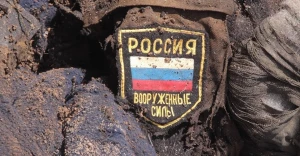
Russian shadow fleet operates scheme to finance war against Ukraine
After a year and a half of sanctions imposed on Russian oil, the aggressor has managed to keep oil revenues at a fairly high level
These oil revenues are one of the main sources of Russian export income, which, in turn, helps finance the war machine against Ukraine.
In 2021, before the outbreak of the full-scale war, energy resources accounted for more than half of Russia's total export revenues. Oil exports made up 22.3%, and petroleum products nearly 14%. Natural gas accounted for only 12.7% of total export revenues.
With the start of full-scale aggression, the Russians attempted to blackmail Europe by limiting gas supplies. However, Europeans found new suppliers, causing Russian natural gas exports to collapse. As a result, the importance of oil and petroleum products export for the aggressor's economy has grown even more.
So, what enables Russia to keep its oil exports and corresponding revenues?
Three main factors play a crucial role:
-
China, India, and Türkiye have become the primary consumers of Russian oil. Demand in these countries is so high that they can easily absorb all Russian oil if necessary and under favorable pricing conditions. However, these countries often manipulate the situation to secure discounts on Russian oil. From Türkiye, Russian oil and petroleum products frequently make their way to Europe, while diesel fuel produced in India from Russian oil is legally imported by the EU.
-
The OPEC+ agreement to cut production contributed to higher oil prices. This, in turn, offset the increased logistics costs of delivering oil to China and India. Logistics has indeed become more expensive: supplying Europe from Baltic and Black Sea ports is one thing, but delivering to India and China is another. However, there are ports near these countries that handle Russian oil shipments, including ESPO, which is of higher quality than Russia's primary oil brand, Urals.
The so-called shadow fleet consists of tankers that have created a parallel shipping network, involving hundreds of vessels with non-transparent ownership.
This shadow fleet plays a crucial role, as these vessels supply oil while bypassing sanctions and price restrictions ($60 per barrel of oil, $100 per barrel for oil products trading at a premium to oil, such as gasoline and diesel, and $45 per barrel for oil products trading at a discount, such as fuel oil). This strategy is precisely what enables the aggressor to maintain its revenue stream and continue financing the war against Ukraine.
Importantly, the number of sanctions imposed on shadow fleet vessels is very small, and their effectiveness is often questionable. This creates a loophole for the aggressor to quietly profit from its key resource oil. Meanwhile, the Russians are continually adding new vessels to this fleet, further undermining the effectiveness of the existing sanctions.
About the author. Andrian Prokip, expert at the Ukrainian Institute of the Future.
The editors do not always share the opinions expressed by the authors of the blogs.
- News












































